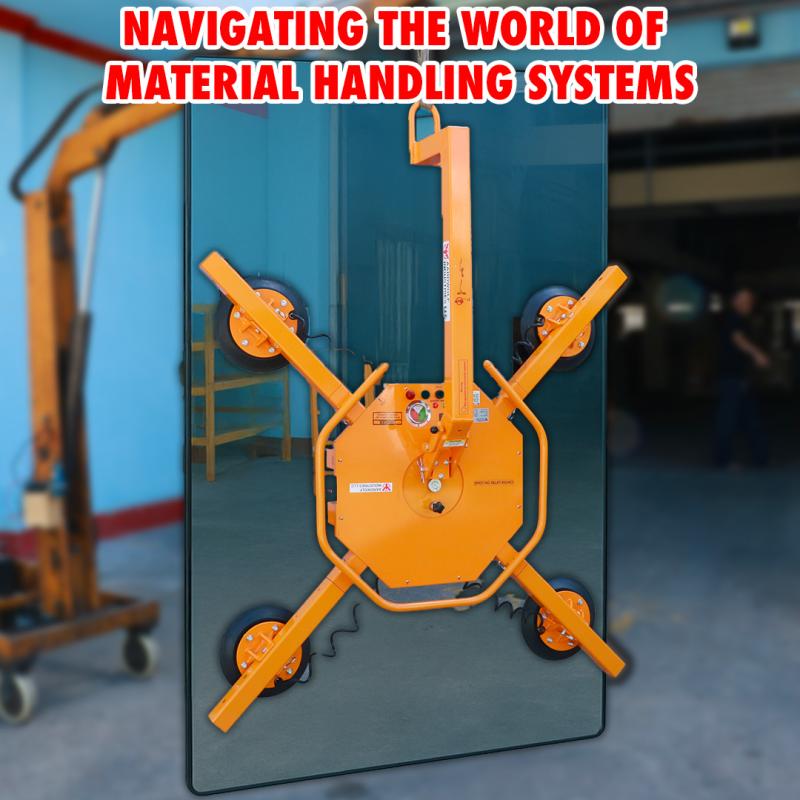



From basic manual processes to cutting-edge automation, choosing the right mix of equipment and workflows can dramatically reduce costs, boost productivity, and enhance safety. In this comprehensive guide, we’ll explore how to assess your needs, compare system types, and select optimal material handling equipment—whether you’re investing in a simple lifting clamp or a sophisticated vacuum lifter slab lifter system.
Manual handling relies on human labor supported by basic tools such as hand trucks, pallet jacks, and small trolleys. It’s highly flexible and requires minimal upfront investment, making it ideal for low-volume operations or specialty tasks. However, the physical strain on workers and limited throughput can become constraints as volumes grow.
Mechanical systems use machines—such as conveyors, hoists, and cranes—to move goods. Common in mid- to high-volume settings, these solutions accelerate throughput and reduce ergonomic risks. Examples include forklifts with attachments like scissor lifters for height adjustment or gantry crane material handling setups for long-span transfers. Mechanical systems demand greater capital and thoughtful layout planning, as reconfiguration can be time-consuming.
Automation represents the apex of material handling technology. From Autonomous Mobile Robots (AMRs) to fully integrated Automated Storage and Retrieval Systems (AS/RS), these solutions deliver 24/7 operation, high accuracy, and seamless integration with Warehouse Management Systems (WMS). The upfront costs and technical expertise required are higher, but the long-term ROI—through reduced labor, minimized errors, and scalable performance—often justifies the investment for growing or high-throughput warehouses.
Choosing the best system involves balancing multiple factors:
Weight & Size: Heavy or oversized loads may require specialized lifting equipment such as a robust clamp lifter or a vacuum lifter.
Fragility & Surface: Smooth, delicate surfaces benefit from suction-based lifters; uneven shapes call for clamp or scissor lifters.
Order Volume: High-velocity e-commerce fulfillment often leverages automation; lower-volume or variable-SKU operations may rely on mechanical or hybrid solutions.
Growth Projections: Modular systems—like AMRs or conveyor segments—can scale more easily than fixed, static installations.
Footprint Constraints: Narrow-aisle forklifts paired with the right attachments can maximize storage density.
Vertical Storage: High-bay racking with stacker cranes or AS/RS modules unlocks cubic space, reducing your warehouse’s expansion needs.
Capital vs. Operational Costs: Manual systems demand lower capital but higher labor costs; automated systems invert this balance.
Life Cycle Cost: Factor in maintenance, spare parts, energy consumption, and training over the asset’s entire lifespan.
Standardized unit loads streamline handling and storage. Consider The Transport Frame TF2000 for heavy-duty, stackable pallets that protect fragile goods and reduce manual intervention. Pallet jacks and forklifts work more efficiently when loads are uniform and secured.
Moving large stone slabs demands precision. Invest in the ideal slab lifter to minimize chipping and improve cycle times. For bulk stone processing, read about efficient handling of heavy stone slabs to see how optimized processes reduce damage and waste.
Scissor lifters bring height adjustability and ergonomics to pallet staging. Discover the importance of scissor lifters for reducing repetitive strain injuries. For irregular shapes like concrete blocks, the horizontal lifting clamp features high-friction, and block lifting clamps improve efficiency in stone processing, ensuring secure grips without slipping.
When handles or clamps risk surface damage, vacuum lifters excel. Vacuum Lifter is designed for handling non-porous panels safely, while the specialized lifting glass device AL30AWJH uses precision suction cups to cradle delicate sheets—boosting throughput and reducing breakage.
Overhead cranes and jib cranes extend your reach for heavy or bulky loads. Learn How to use gantry cranes to optimize long-span transfers across your warehouse. For mobile lifting, How to operate a portable jib crane safely offers step-by-step guidance. Don’t overlook forklift boom versatility—learning how to handle the forklift boom adds outreach capabilities without needing a full crane setup.
Proper load restraint prevents accidents and product damage. Train teams on ratchet tie down traps usage and ensure each load is secured before transport. Use standardized pallet patterns and protective dunnage to maintain stability.
Reduce operator fatigue with adjustable lift tables, anti-fatigue mats, and assistive devices like scissor lifters. Implement job rotation and micro-breaks to combat repetitive strain. A focus on ergonomic design not only enhances safety but also drives productivity.
A unified software ecosystem synchronizes order data, inventory status, and equipment operations. Integrate your WMS with AS/RS and AMRs for real-time slotting and dynamic task assignment. Link to Transportation Management Systems (TMS) to plan optimized outbound routes, ensuring dock-to-delivery efficiency.
Measure critical metrics—order accuracy, picks per hour, equipment uptime—and display them on live dashboards. Leverage insights to refine workflows, adjust staffing, and plan maintenance. Explore indispensable material-handling equipment and reliable material-handling equipment to ensure your toolkit evolves with industry best practices. For actionable strategies, read How to Optimize Your Material Movement.
Navigating the vast landscape of material handling systems requires a balance of strategic planning, the right lifting equipment, and ongoing optimization. By matching system types—manual, mechanical, or automated—to your unique operational profile, you’ll unlock substantial gains in efficiency, safety, and cost control.
Further Resources:
By drawing on these insights and leveraging the right combination of equipment—whether it’s a simple ratchet tie down trap, a precision scissor lifter, or a fully automated AS/RS—you’ll steer your warehouse toward peak performance in the dynamic material handling industry.
Sign up to receive the latest info on new Aardwolf products, special offers and more.
By signing up you agree to receive emails from Aardwolf with news, special offers, promotions and other information. You can unsubscribe at any time.